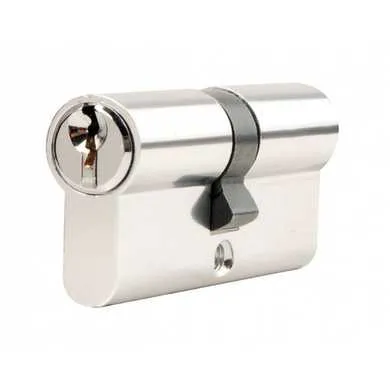When it comes to home security, the basics are crucial. And yes, it all starts with your door locks.
After all, what’s the point of having a fancy home security system if your locks are easy to pick?
So, you’ve probably been looking to buy new ones, and you’ve no doubt come across various types, including Euro cylinder locks.
But what are they exactly, and what sets them apart?
We’ll tell you all you need to know about Euro cylinder locks in our expert guide. Read on.
Table of contents:
- What is a Euro cylinder lock?
- Euro cylinder lock types
- Euro lock sizes
- How to measure a euro cylinder
- How to change a euro cylinder lock
- What Euro cylinder lock do I need?
- Lock up with a new euro cylinder lock
What is a Euro cylinder lock?
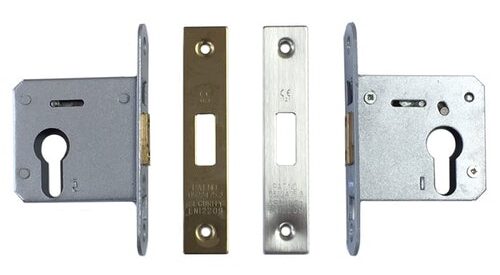 A Euro cylinder lock, also known as a Euro lock barrel or a Euro profile cylinder lock, is a pin tumbler lock. These types of door locks, which feature multiple pins, are extremely common and popular in the UK.
A Euro cylinder lock, also known as a Euro lock barrel or a Euro profile cylinder lock, is a pin tumbler lock. These types of door locks, which feature multiple pins, are extremely common and popular in the UK.
Why is that?
Because they’re safe and secure as well as easy to install and replace.
Here’s how high-security Euro cylinder locks work:
A revolving cam, which the key rotates, is located in the centre of the lock. When you insert the key, it moves the lock bolt so you can lock and unlock the door. It can be either a keyed alike Euro cylinder or keyed differently, depending on your preference.
What does keyed alike mean, I hear you say?
When a set of keys are ‘keyed alike’, you can use one key to open the entire set. This is quite a convenient solution that will save you time. In contrast, when ‘keyed differently’, each lock has a unique key. This is ideal when you’re looking for that extra bit of security.
Euro cylinder lock types
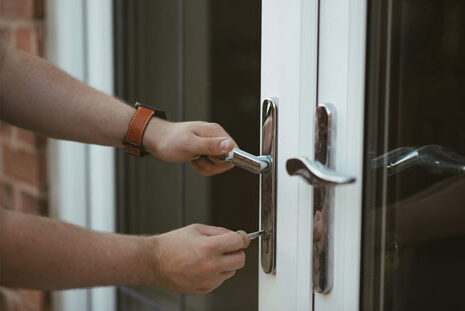
There are three basic Euro cylinder lock types. Let’s take a closer look at each one.
Full Euro cylinder lock
A full or double Euro door lock is keyed on both sides. This is the type you’re likely to come across on external doors.
Half Euro cylinder lock
A half or single Euro cylinder lock is shorter than a full Euro cylinder lock and keyed only on one side. This type is ideal for garage doors and shed doors.
Thumb turn Euro cylinder lock
Just like a half Euro barrel lock, a thumb turn one is keyed on one side. On the other side, you have a thumb turn. It’s a convenient solution, found on both external and internal doors, which allows you to lock or unlock the door from the inside without a key.
Euro lock cylinder sizes
Different types of cylinder locks come in different sizes, in increments of 5mm. The size you need depends on the thickness of your door, with the most common Euro cylinder size being between 60mm and 120mm for full Euro cylinder locks.
To make things easier for you, we’ve put together a Euro cylinder lock sizes chart.
| Length on external side | Length on internal side | Overall length |
| 30mm | 30mm | 60mm |
| 30mm | 40mm | 70mm |
| 30mm | 45mm | 75mm |
| 30mm | 50mm | 80mm |
| 40mm | 40mm | 80mm |
| 40mm | 50mm | 90mm |
| 40mm | 60mm | 100mm |
| 45mm | 45mm | 90mm |
| 45mm | 50mm | 95mm |
| 45mm | 65mm | 110mm |
| 50mm | 50mm | 100mm |
| 55mm | 35mm | 90mm |
| 55mm | 45mm | 110mm |
How to measure a Euro cylinder
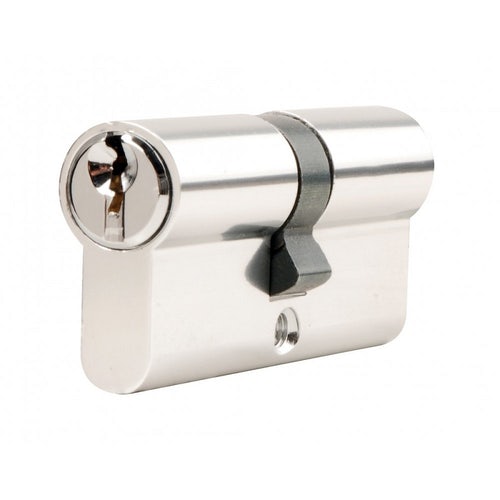
It’s absolutely essential that you get the right size Euro profile cylinder lock for your door. If it’s either too long or too short, it might be easy to pick or present other difficulties.
Here’s how you go about measuring a Euro cylinder:
You can first remove it from the door if you like, but that’s not necessary. Open the door and start with the external side. Make sure your measuring tape is straight, measure from the centre of the lock fixing screw to the face end of the lock. Then, do the exact same thing for the internal side.
It’s as simple as that!
How to change a Euro cylinder lock
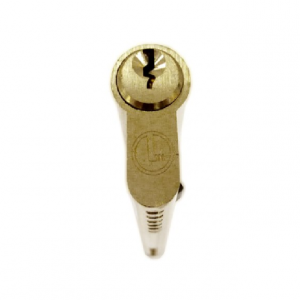 Changing a Euro cylinder is a breeze, which is in part what makes them so popular with landlords and homeowners alike.
Changing a Euro cylinder is a breeze, which is in part what makes them so popular with landlords and homeowners alike.
This is what you need to do:
Once you’ve measured the old lock, you need to remove it. Open the door, unscrew the lock fixing screw and remove it completely. Then, slightly loosen the door handle screws.
Next, turn the key slightly to either side to align the cam tongue with the main body of the lock. Turn the key several times to both sides and carefully pull it towards you to take out the lock.
Now it’s time to fit the new one! Once you’ve lined up the cam tongue and the lock body like you did for the old one, insert it into the hole. Screw in the lock fixing screw tightly, and you’re all done!
What Euro cylinder lock do I need?
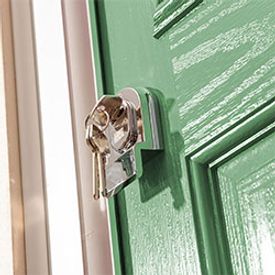
As we mentioned earlier, full, half and thumb turn Euro cylinder locks tend to work best with different types of doors. It’s also important to consider the material your door is made of. For instance, uPVC door backplates are asymmetrical, so the internal and external lengths of the door lock will be different.
But that’s not all:
The level of security you require is also vital, especially when it comes to your outside door. To this end, anti-snap Euro cylinders feature a so-called ‘sacrificial snap line’, which is an effective protection against lock snapping. Check our guide on lock snapping and anti-snapping locks for more details.
What’s more, there are anti-pick, anti-drill and anti-bump locks which protect against other types of burglar attacks.
Whatever the case, it’s a good idea to invest in a Euro cylinder lock designed to a BS EN 1303 Standard. In addition, look for a BSI kitemark or a Sold Secure rating, both of which are given only to products of the highest quality.
Lock up with a new Euro cylinder lock
The Euro lock cylinder has been a tried and tested safety solution in UK homes for many decades. It’s simple yet secure, and there are different lock barrel types that cater to all sorts of protection needs.
And now that you know all there is to know about Euro cylinder locks, you should have no trouble buying the right ones without any delay. Much better to be safe than sorry.

